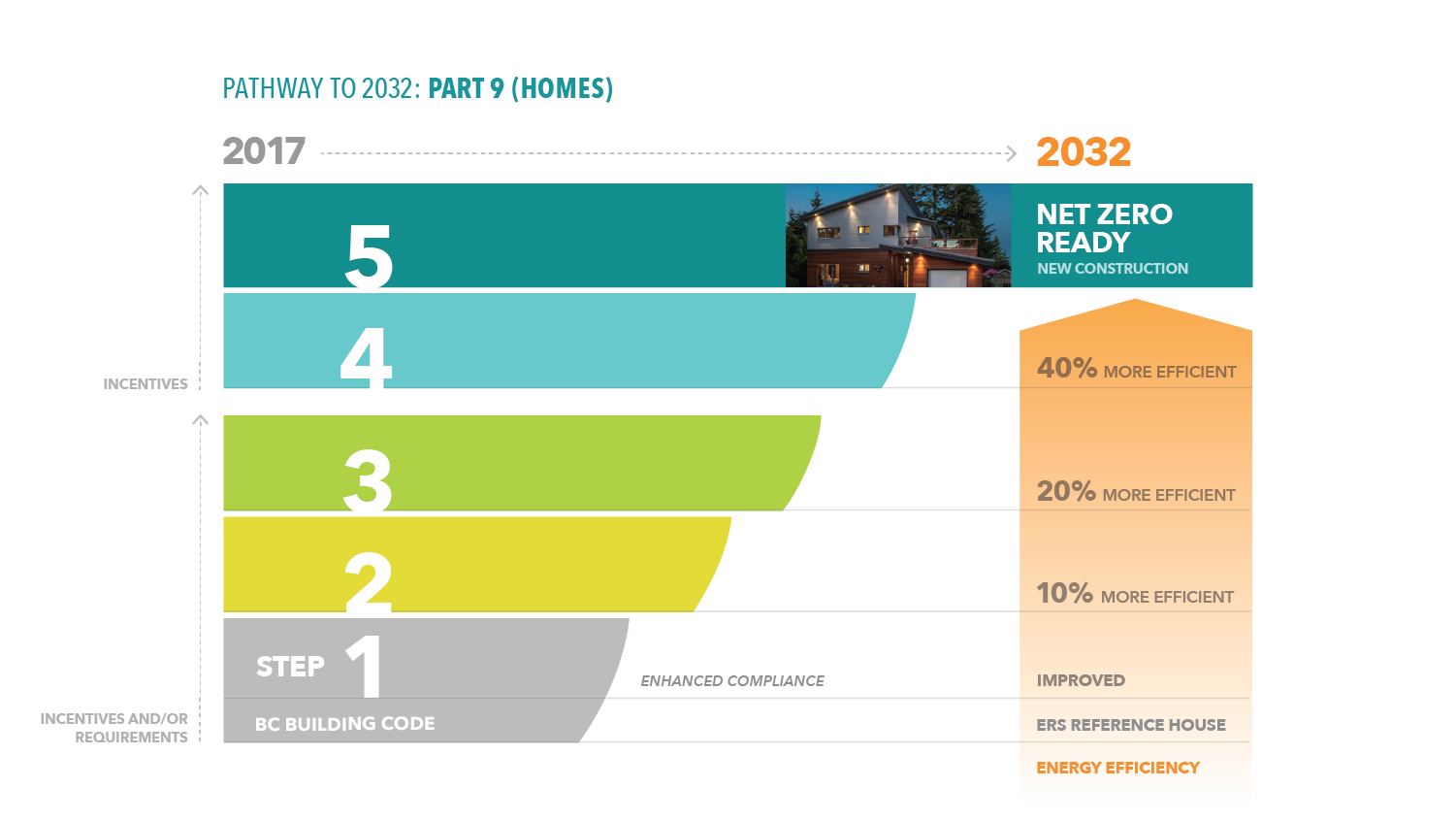There’s a new provincial standard for building energy-efficient homes in BC, and we’re pretty excited about it.
The BC Energy Step Code, enacted in April of this year, is a province-wide guide to help builders gradually increase the energy efficiency of their projects. Step 1 of the code is basically in line with current building codes, whereas Step 5 involves homes that are Net Zero Ready and featuring Passive House features.
Curious about how it works, and why it’s important? We’ve broken down what we consider the most pertinent points below.
A voluntary code
The BC Energy Step Code is not to be confused with the BC Building Code. The BC Building Code dictates a standard of safety that all homes must measure up to in order to be lived in.
The BC Energy Step Code pertains exclusively to how energy is used within a home, and it’s voluntary. Homebuilders can choose which step (aka how energy-efficient) they want their homes to be. Further, builders can change the step they intend to reach from project to project, or choose to unilaterally hit, say, step 3 in everything they build.
Another big difference from the BC Building Code is that the Energy Step Code isn’t prescriptive: builders can use any technology, heating source, or material to hit their step. To “prove” their step, builders must use energy modelling software and on-site testing to demonstrate that both their design and the constructed building meet the requirements of the code.
One import note: while the code is still voluntary, local governments and municipalities have the option to adopt a step into their building code. These are the kinds of decisions we’re seeing across municipalities in Greater Vancouver, including one recently made by North Vancouver.
What Each Step Means
The provincial government has done a great job breaking down the 5 steps into a format that’s easy to digest at a glance.
For those interested in more detail, there’s quite a bit of information available online, but here’s the gist of it:
Step 1 is in line with the energy efficiency you’d see in a home under the current building codes.
Steps 2 through 4 are incremental increases in energy efficiency, from 10% to 40% more efficient than the baseline established in Step 1.
And Step 5 (full disclosure, our favourite) positions a new home to be “Net Zero Ready”, oftentimes by using the techniques and philosophy of Passive House building.
Where we’re headed
The intention of the new Energy Step code is varied, but there are two reasons we love it.
Firstly, it creates a unified way across the province for builders and government to measure energy efficiency, without being incredibly restrictive in terms of building practices. If a local municipality dictates a Step 3 code across their city or town, we know exactly what’s required, but we can still build the way we like to build. This is great for any company that builds in multiple municipalities.
Second, the program is intended to move all building towards maximum energy efficiency: by 2032, the intention is to have all new buildings qualify for a Step 5 rating. This means that within 15 years all new homes will have to be built to a code that ensures they’re so energy-efficient they don’t actually consume any power off the grid!
We’re excited to see how it all plays out.
